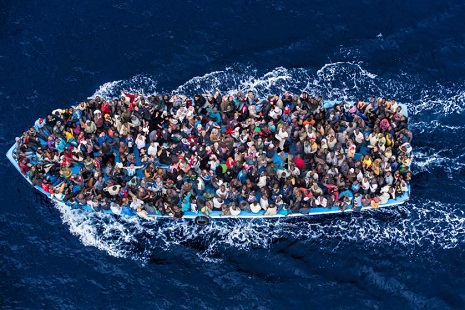From January to June, 68,000 migrants entered Greece from Turkey, while 67,500 landed on Italy’s southern shores after crossing the Mediterranean from Libya.
The U.N said the majority of migrants who reach Greece are Syrians who first fled for safety to neighboring countries such as Turkey and Lebanon.
But years of migrant arrivals, coupled with insufficient international aid, have put considerable strain on those countries, whose economies and infrastructure are struggling to cope.
Many decide to leave, with the vast majority crossing the sea to Greece, the U.N. said.
Greece is struggling to cope too, however, at a time its future as a member of the eurozone is at stake and as it seeks a third bailout from international creditors to stay afloat.
The cash-strapped country has fewer than 2,000 places in reception centers for migrants, which the U.N. says is completely inadequate.
Many decide to continue their journey across The Former Yugoslav Republic of Macedonia and Serbia to Hungary, with the aim of reaching Germany and Sweden.
The UNHCR estimates an average of 1,000 people are illegally entering Macedonia from Greece every day now, compared with 200 people a few weeks ago. Migrants report they are face abuse and violence from people smugglers and criminal organizations along the route, as well as tighter border controls.
On Tuesday, the interior ministers of Austria, Hungary and Serbia agreed to increase the number of joint patrols on Serbia’s borders with Hungary and Macedonia.
Controls have also intensified along the French and Italian, and Austrian and Italian borders, as the vast majority of migrants reaching Italy head toward Northern Europe, where care systems for migrants tend to be more generous.
“Europe has a clear responsibility to help those seeking protection from war and persecution,” said António Guterres, U.N. High Commissioner for Refugees. “European countries must shoulder their fair share in responding to the refugee crisis, at home and abroad.”
The U.N. also warned that the number of migrant arrivals typically increases in the second half of the year, especially during the summer months. Arrivals in the second half of last year were almost double those of the first half.
More about:
















































